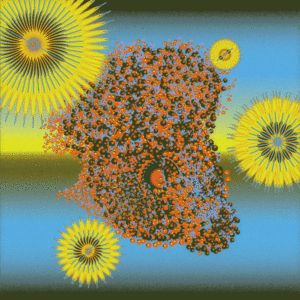Magical moment
The enormity of the first U.S. adult heart transplant
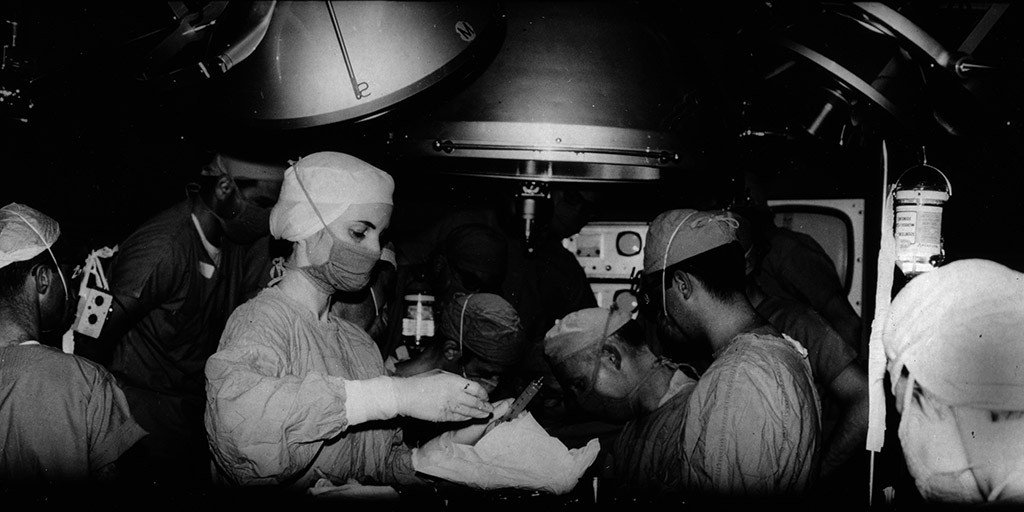
For 30 seconds on the afternoon of Jan. 6, 1968, in an operating room at Stanford Hospital, two human hearts lay very still in two separate basins near the unconscious body of a 54-year-old patient, and time froze. “We both stood there and stared into this huge, empty cavity for a good half a minute,” says Edward Stinson, MD, chief resident at the time. “It was a magical moment.”
Related reading
Stanford’s heart transplant breakthrough precipitated years of protocol advances
The young surgeon was assisting his mentor Norman Shumway, MD, PhD, chief surgeon, who had just removed Mike Kasperak’s diseased heart in an effort to save the retired steelworker’s life. It was the first attempted heart transplant of an adult in the United States.“Do you think this is really legal?” Stinson asked Shumway.“I guess we’ll see,” Shumway said.
One of the two hearts, diseased beyond repair, would never beat again. But the other, if transplanted into Kasperak’s chest within the next hour or two, could start up again and save his life. It was an outrageous act that was being followed with bated breath by the world as a frenzied press corps, camped out in the hallways of the hospital’s basement, issued moment-by-moment reports.
“I just remember thinking the future was going to be different if they can transplant a heart,” Tom Brokaw, the anchor and managing editor of NBC Nightly News for 22 years, says in a recent interview. On that day, he was one of the reporters at the hospital, waiting for the news to break.
That surgery, 50 years ago, captured a moment in history when transplantation of a human heart was so hard to fathom, so bizarre, it was considered shocking, almost indecent.
The heart, more than any other organ, holds a unique place in the public imagination, seen as the seat of the soul, the symbol of love and compassion. So, what happens if it’s cut out and replaced with a stranger’s? Does a man become a woman if transplanted with a woman’s heart? Was it even legal? These types of questions hung over the surgery, as Shumway and Stinson paused for a moment to consider the enormity of their actions.
On that cold, bright winter day in 1968, the spell broke and the surgeons got back to work. There was no turning back.
Race to transplant
In the race to be the first to transplant the human heart — and a race it was — Shumway, a tall, lanky country boy from Michigan, was considered the leader of the pack. His decades-long research working with Richard Lower, MD, in dogs in the laboratory, ultimately led to what remains the standard surgical technique for heart transplantation.
The researchers’ first big success occurred in 1959, when Shumway and Lower — a surgical resident who later joined the faculty of the Stanford School of Medicine — successfully performed the first dog heart transplantation. Shumway, along with a gang of rotating residents, continued studies in the lab for eight more years and in the process developed a method of preserving the donor heart by placing it in a solution of ice-cold saltwater to reduce its metabolism. They learned about the transplant rejection response, which would become the key stumbling block to successful heart transplants.
Then, on Nov. 20, 1967, Shumway and his team announced that Stanford was finally ready to conduct the first human heart transplant, and the wait for a suitable patient and a donor began. A potential patient had been identified in October, but died before a donor could be found.
Two weeks after Shumway’s announcement, on Dec. 3, 1967, South African surgeon Christiaan Barnard, MD, surprised not only Shumway, but also the entire world, by giving Louis Washkansky, a grocer dying of heart disease, a new heart. Using Shumway’s simple surgical technique, Barnard forever cemented himself into the annals of history as the first to transplant an adult human heart. Washkansky lived 18 days.
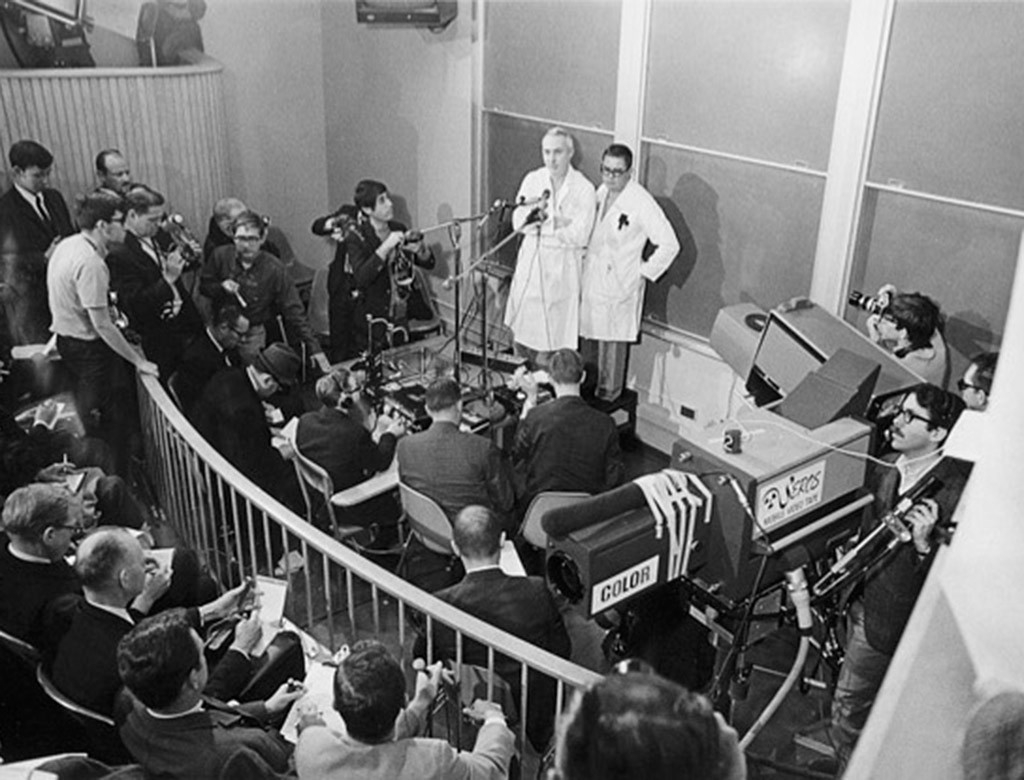
Shumway’s first
It was a shock to the Stanford program. Everyone had expected Shumway to be the first. In fact, Shumway’s first human heart transplant would be the world’s fourth. On Dec. 6, 1967, in New York, the first pediatric heart transplant was performed. The infant’s heart stopped beating after seven hours. Barnard performed a second transplant on Jan. 2, 1968.
Not until Jan. 5, 1968, were both a donor and a transplant recipient found at Stanford. At 2 p.m. Jan. 5, Kasperak had a massive heart attack at his home in East Palo Alto. He’d been living with heart disease for several years, and the prognosis wasn’t good.
“He had been referred to me,” says Don Harrison, MD, a Stanford cardiologist. “He had end-stage heart disease and was not going to live very long. I remember talking to his wife about this transplant surgery. I explained to her that this was a new procedure that had only been done once in the world before. I had to explain to her that her husband was terminally ill, and there was nothing we could do.”
According to news reports, Kasperak asked his wife, Ferne, if he should go ahead with the operation.“Go ahead,” she said. “I want you alive with me.”
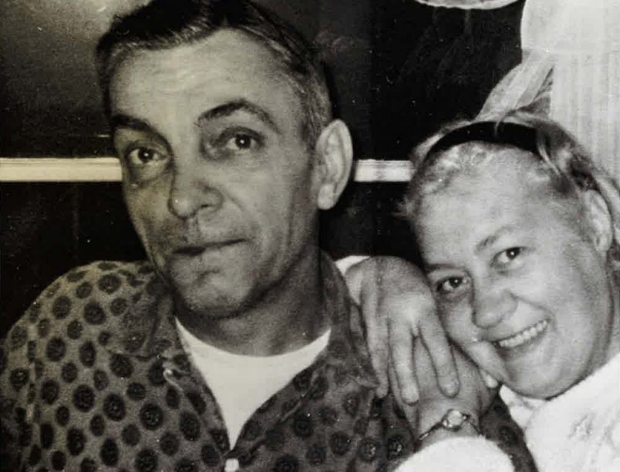
Just four hours after Kasperak’s heart attack and 7 miles west of his home, another tragedy occurred. Virginia-Mae White, a 43-year-old housewife and mother of two from Mountain View, suffered a brain hemorrhage that left her in a coma at nearby El Camino Hospital. Physicians had confirmed that she was brain-dead by the time they placed her on a respirator, which pumped air in and out of her lungs and kept her heart beating.
Part of the pathos surrounding the drama of each of the 2,000 heart transplants routinely done each year in the United States comes from the reality that for one person to live, another must die. Today, more than 4,000 people in the United States are waiting for a donor heart at any given time. Each case evokes the same emotional quandary that Shumway felt when he picked up the phone just before noon Jan. 6, 1968, to call Bill White, Virginia’s husband, to ask him for his wife’s heart.
It was an outrageous act that was being followed with bated breath by the world.
The couple lived in a modest home and had two children, an 18-year-old daughter and a 12-year-old son. They had recently celebrated their 25th wedding anniversary. Shumway was typically light-hearted and quick-witted. In his lab, the professor of cardiothoracic surgery was upbeat, confident, somewhat irreverent and brilliant. His team members loved him. For him, as for anyone, this wasn’t going to be an easy conversation.
In his book Every Second Counts: The Race to Transplant the First Human Heart, author Donald McRae describes the conversation between Shumway and Bill White that day: “Once Shumway had explained the mechanics of transplantation and discussed the concept of brain death, White revealed that his wife had been fascinated by the South African transplant. She and Bill had recently talked to friends about Edward Darvall — who had allowed his daughter’s heart to be used for the Washkansky transplant. ‘How marvelous,’ Virginia White said, ‘to give someone else a chance to live.’
“White needed only 30 minutes to discuss the transplant with his children. His answer to Shumway was decisive. They wanted him to proceed.”
“Knowing that she is helping another is easing our grief,” Bill White said later in news reports. “I’ve got two of the proudest children you ever knew.”
It was time to round up the surgical team.
Bringing the donor to Stanford
That afternoon, Stinson was sent to pick up Virginia White at El Camino Hospital in an ambulance and deliver her, with her heart still beating, to Stanford Hospital at 3:30 p.m. Shumway received a neurologist’s confirmation of brain death to proceed, and the surgery began.
Two surgical teams were set up in two adjoining rooms on the second floor of the east wing of the hospital. Stinson removed White’s heart in Room 12, then walked it over in a basin filled with cold saltwater to Room 13, where Shumway was waiting. Kasperak was connected to a heart-lung machine that kept his blood circulating while Shumway cut out his diseased heart.
White’s heart, just a third the size of Kasperak’s, which was swollen by disease, was then lifted out of its basin and placed inside the empty chest cavity. Shumway sutured White’s heart into Kasperak’s chest, connecting the major heart vessels — the vena cava, the aorta, the pulmonary artery — and the left atrium.
In all, the surgery took about 3½ hours. White’s heart had been motionless for two hours. Now, there was nothing to do but wait and see if it would beat again.
It generally takes about 20 or 30 minutes for a transplanted heart to begin to beat after surgery. The surgeon triggers the electrical system of the heart with a single shock from a defibrillator, then waits for it to “pink up” as blood flows back into it. The recipient remains attached to the heart-lung machine until the heart starts to beat effectively again and can take over to keep the blood circulating.
“The excitement was palpable,” Harrison says. Ten, 20 minutes passed. At 25 minutes, the new heart faintly pulsed and then grew stronger. “We were all elated.”
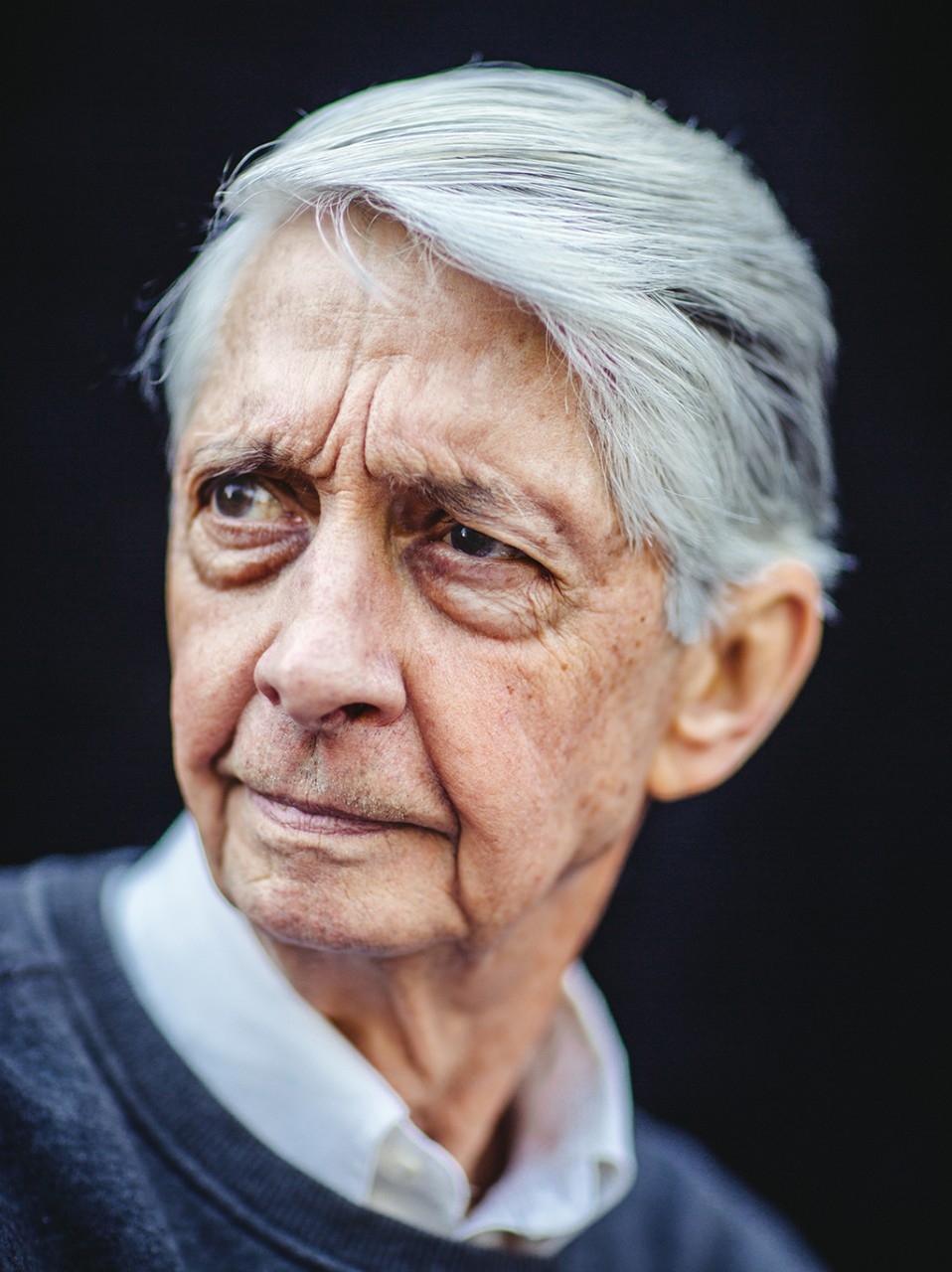
‘A three-ring circus’
Downstairs, all hell broke loose. Fifty or so journalists had arrived even before surgery began, according to an article in Stanford Report by Spyros Andreopoulos, director of the medical center’s news office at the time. He had converted two classrooms into an impromptu press room.
“The tip actually came from a reporter from the San Jose Mercury News who was at a wedding reception with members of the transplant team,” Andreopoulos wrote. “When they received an emergency call from the hospital, he deduced that the transplant operation was imminent.” The news spread fast. Television reports aired that night.
“My friends and I were on the phone that night saying, ‘Oh my gracious, did you hear they did the transplant?’” says Joan Miller, RN, who was at home after finishing her shift on the third floor of the hospital, just above the surgical rooms.
“When I arrived at work it was chaos. It was like a three-ring circus. People were everywhere. It was just great fun and exciting. On break, we’d race down to the basement to see it all — the cameras, the equipment, the news anchors.”
By the time the operation was complete and Kasperak was moved on a gurney down the hall to the intensive care unit, reporters were literally scaling the hospital walls trying to snap photos of him through the window of his room.
“I remember thinking they were going to break their necks!” says Stinson, who saw them climbing when he stepped outside. Kasperak’s nurses, though, were quick to close the curtains, preventing any photos, and the defeated reporters climbed back down.
The next morning, Shumway, with Harrison by his side, stood with arms folded over a wrinkled, white lab coat and faced the crowd of several hundred reporters at a news conference held in one of the medical school’s amphitheaters.
“We have reached first base, so to speak, but our work is just beginning,” Shumway said, cameras clicking. “The heart transplant patient, Mike Kasperak, awakened in satisfactory condition.” Harrison, the patient’s cardiologist, presented diagrams of cardiac functioning measurements collected through the night showing that the heart was functioning well.
Shumway, known to be shy of the media, would later turn down offers to appear on Face the Nation, Meet the Press and the Today show, but that morning he appeared calm and in high spirits.
“Shumway looked just a little bit like a guy who had just got off the gridiron,” Brokaw says. “Exhausted, but pleased with himself. He looked the part — handsome, white jacket, just a built-in charisma. Here was this monumental moment, and he handled it with such modesty.”
A fight to keep the patient alive
During the next few weeks, Stinson, who later joined the School of Medicine faculty, led the fight to keep Kasperak alive. The first five nights post-surgery, Stinson remained sleepless by his patient’s side. Meanwhile, the Stanford press office issued daily bulletins on Kasperak’s condition.
“The patient, Mike Kasperak, 54 years old, was reported to be awake and alert,” the New York Times reported three days after surgery. “He was allowed a first visit with his wife yesterday evening and slept during the night.” Two days later, it followed up with: “Mr. Kasperak managed to scribble an ‘I love you’ note and hand it to his wife.”
For the first few days post-surgery, Kasperak’s condition remained hopeful, but then he slipped into a semi-comatose state. Extensive bleeding of the stomach led to worries that his liver and kidneys had been too severely damaged by years of heart disease to keep him alive.
“In retrospect, he was too ill at the time of surgery,” Stinson says. “His lungs, liver, kidneys, GI tract weren’t functioning well. His body didn’t tolerate the stress of the operation well.” Fifteen days after the surgery, Kasperak died of severe hemorrhaging. Stinson, making certain he was given enough morphine that he was never in pain, was there by his side.
In the aftermath of the Stanford transplant, the world hit near-hysteria in its fascination with heart transplants. Nearly 100 medical institutions jumped in to attempt the operation. The surgery itself proved fairly simple, but the inability to prevent recipients’ bodies from rejecting foreign hearts quickly led to alarming death rates. Sensationalized accounts of these operations appeared in newspapers like the National Enquirer. One paper ran with this headline: “Docs give her a man’s heart — now she puffs stogies and rants and raves at TV wrestlers.”
At the same time, lawsuits against heart surgeons became something of a fad worldwide, with defense attorneys claiming their clients were not guilty of murder despite having, for example, shot a victim in the head. It was the surgeons, who removed the victims’ hearts, who were guilty of the murder, they argued.
The Santa Clara County coroner threatened to bring murder charges against Shumway after his first transplant, but the district attorney refused. Shumway did testify in the 1974 murder trial in Oakland of Andrew Lyons, who had shot one of Shumway’s transplant donors in the head.
“I’m saying anyone who is brain-dead is dead,” Shumway testified, according to a story in the New York Times. Lyons was found guilty.
Not until 1976 would the issue of cause of death be resolved in California, with the establishment of a state law on brain death that made it clear doctors could legally remove a beating heart from the body of a brain-dead patient.
In 1970, on the third anniversary of Barnard’s first transplant, exhausted by this near madness and frightened by the soaring death rates, the medical establishment, led by the American Heart Association, called for a moratorium on heart transplants. All major institutions complied, except for one: Stanford.
A 1971 Life magazine cover story, “A new report on an era of medical failure: The tragic record of heart transplants,” reported the numbers: of the 166 heart transplants performed, only 23 recipients were still alive, giving the procedure an overall mortality rate of 85 percent.
“Shumway had been the man who American medicine thought would usher in the era of transplanted hearts,” the magazine reported. “Instead he became the principal surgeon to survive it. Mercifully, the race was no longer a race. The spectators had gone home; all the runners save one had dropped out. He could afford to take all the time he needed to reach the finish line.”
Refining the work
“We just ignored it all,” says John Schroeder, MD, a professor of cardiovascular medicine who in 1968 was a member of the Shumway team as a cardiology resident. He helped write the grant proposals that kept Stanford’s research program alive following Kasperak’s transplant.
Returning to the laboratory, the Stanford physician-scientists continued to methodically publish scientific papers and conduct heart transplants, slowly establishing new protocols for the selection of patients and for measuring and treating rejection that would lead to the success of heart transplantation.
Today, Stanford Medicine’s reputation is firmly established as the research center responsible for leading to the thousands of successful transplants carried out annually around the world. But that first surgery remains a magical moment, for Stinson at least, and an essential one, along the journey toward making heart transplantation a standard operation.
“We learned a lesson,” Stinson says. “Patient selection would be key to the success of this operation. Mr. Kasperak was just too sick to survive. At the time of his death, the heart was probably the only functioning organ he had.” Shumway, who died of cancer in 2006, for many years kept a slogan hanging on his wall that said: “Where there is death, there is hope.”
The year following Mike Kasperak’s death, Ferne Kasperak was asked by a reporter at the Palo Alto Times about the decision that led to her husband undergoing the first adult heart transplant in the United States.
“He had 15 days extra that I don’t think he would have had,” she reportedly said. “I have no regrets, and I don’t think Mike did either.”
